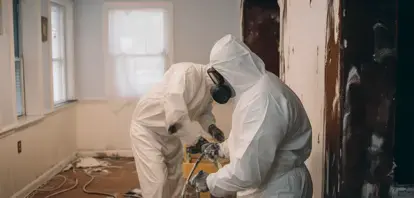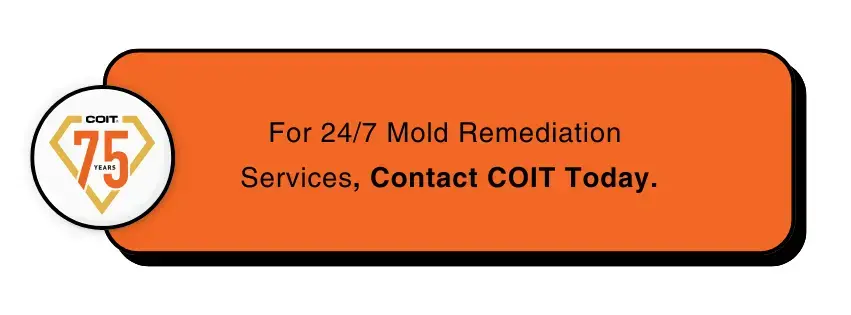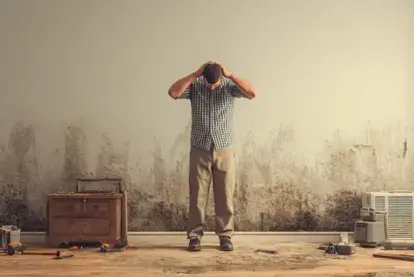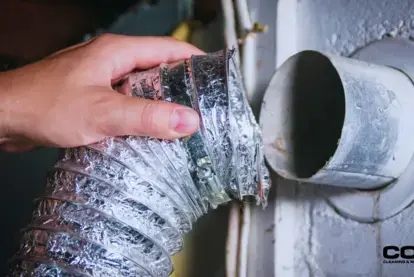
How Long Does Mold Remediation Take?
Contact COIT for a professional cleaning!
Mold remediation is critical for maintaining a healthy living or working environment. If you’re planning on going through this process, you should understand the time it takes to effectively remove mold.
This article delves into the timeline of mold remediation, exploring the factors that influence how long it might take and each of the steps involved in ensuring a thorough cleanup.
What is Mold Remediation?
Mold remediation is the process of identifying, containing, removing, and preventing mold in an indoor environment.
It involves a series of steps to ensure the mold is not only removed, but also that any conditions contributing to its growth are addressed to prevent future issues.
Factors Affecting Remediation Time
Several different factors can affect how long mold remediation takes, including:
- Severity: Larger or more severe mold infestations typically require more time to remediate.
- Size: Larger spaces with mold issues will naturally take longer to treat than smaller areas.
- Environmental Conditions: Factors like humidity levels and temperature can impact mold growth and the time needed for remediation.
- Materials: Different materials, like drywall or wood, may require different approaches, some which are more time-consuming than others.

The Mold Remediation Process
The mold remediation process typically involves the following steps:
Mold Assessment (1-2 Days)
First, a professional assessment is conducted to determine the extent of the mold issue.
This involves inspecting various areas of the property, including hidden spaces and air ducts, to identify all mold sources and plan the remediation strategy.
Containment (1 Day)
This step involves setting up containment barriers like plastic sheeting and negative air pressure to prevent mold spores from spreading during the removal process.
It's crucial to isolate the affected area to protect the rest of your property.
Mold Removal (1-5 Days)
The actual process of removing mold will vary based on the severity of your infestation.
This step can involve physically removing mold-infested materials, using antifungal and antimicrobial treatments, and addressing the source of moisture that led to the mold growth.
Cleaning and Sanitizing (1-2 Days)
Step 4 involves a thorough cleaning of the area and affected items to eliminate mold residues.
This includes cleaning non-porous surfaces, disposing of porous materials that can't be cleaned, and using specialized equipment to sanitize the air and surfaces.
Drying and Dehumidifying (1-3 Days)
You must ensure the area is dry to prevent future mold growth. This involves using dehumidifiers and air movers to remove excess moisture and monitoring the area until it reaches optimal dryness levels.
Restoration (Variable)
Repairing or replacing materials damaged by mold can vary in time based on the extent of damage.
This could range from minor repairs, such as repainting and replacing drywall, to major renovations in cases of extensive mold damage.
Contact COIT for a professional cleaning!
Is it safe to be in the house during mold remediation?
It is generally not recommended to be in the house during mold remediation, especially in areas where work is being conducted.
Mold remediation can disturb mold spores, causing them to become airborne. This can pose health risks, particularly for individuals with allergies, asthma, or immune system issues.
How long should you stay out of the house after mold remediation?
The time you should stay out of the house after mold remediation depends on the extent of the remediation and the methods used.
Typically, it's safe to return 24 to 48 hours after the remediation process is completed. This allows time for any airborne spores to settle and for the air quality to return to safe levels.
Professional vs. DIY Remediation
While DIY mold remediation might seem faster and more cost-effective, it often lacks the thoroughness of professional services.
Professionals have the expertise, equipment, and materials to ensure comprehensive mold removal, often making the process more efficient and effective in the long run.
Learn more about COIT’s mold remediation services.

Will mold come back after mold remediation?
Mold can potentially come back after remediation if the underlying issues that led to its growth are not properly addressed.
Effective mold remediation involves not only removing the existing mold but also identifying and rectifying the sources of moisture that allowed the mold to grow.
Preventing Future Mold Growth
Post-remediation, it's crucial to implement measures to prevent mold from returning. This includes:
- Maintaining Low Humidity: Keeping indoor humidity levels below 50%.
- Proper Ventilation: Ensuring good air circulation, especially in areas like bathrooms and kitchens.
- Regular Inspections: Checking for water leaks or dampness that could foster mold growth.
Understanding the timeline for mold remediation helps set realistic expectations for the process.
While the duration can vary based on several factors, professional intervention typically ensures a more efficient and effective resolution.
Professional Mold Remediation Specialists
Ensure your space is mold-free with COIT's professional mold remediation services.
Trust our experts to provide a safe, thorough mold cleanup in your home or office. Contact us today for a healthier environment.



